The New York Metropolitan Transit Authority (MTA) improved bus navigation by introducing “Next Stop” digital signage, which offers real-time updates on upcoming stops and transfer options. This initiative highlights the role of digital wayfinding signage in simplifying navigation and making places more accessible and intuitive for all users.
By overcoming the limitations of traditional signage, advanced digital wayfinding systems provide clear, interactive guidance, ensuring that visitors can navigate spaces with ease and confidence.
In this comprehensive guide, we explore the intricacies and benefits of wayfinding digital signage:
- Explore how digital wayfinding signage functions and its role in navigation.
- A look at the various digital wayfinding solutions available.
- Uncover the benefits digital wayfinding brings to spaces and users.
- Discover how digital signage has reshaped brand experiences.
- Explore the impact of digital wayfinding in different industries.
- Insights into the essential features to consider in a wayfinding solution.
Whether you’re a retail business owner or an IT marketing executive, this guide promises to illuminate the path to effective digital wayfinding solutions. Let’s get started!
What is Digital Wayfinding Signage and How Does it Work?
Wayfinding allows individuals to navigate spaces with ease, utilizing cues, colors, and signs to lead the way. This method is particularly invaluable in large and complex venues like shopping centers, airports, and medical facilities, aiming to direct visitors to their destinations smoothly and without any mix-ups.
Digital signage provides a modern approach to wayfinding. It enhances traditional wayfinding, transforming it into a more interactive and engaging journey. Using eye-catching digital signs, these systems not only show the way but engage users at every step, making navigation a more dynamic and interactive experience.
A digital wayfinding system consists of two key components:
- Sophisticated Hardware: This includes digital screens and interactive kiosks, positioned strategically throughout the space to draw attention and provide effective guidance. These elements are crucial waypoints, delivering clear and precise information at key decision-making points.
- Intuitive Software: The digital wayfinding software component acts as the brain of the operation, controlling the content displayed on these digital signs. Whether offering basic directions or providing detailed information, the software ensures that each interaction is tailored to the user’s needs.
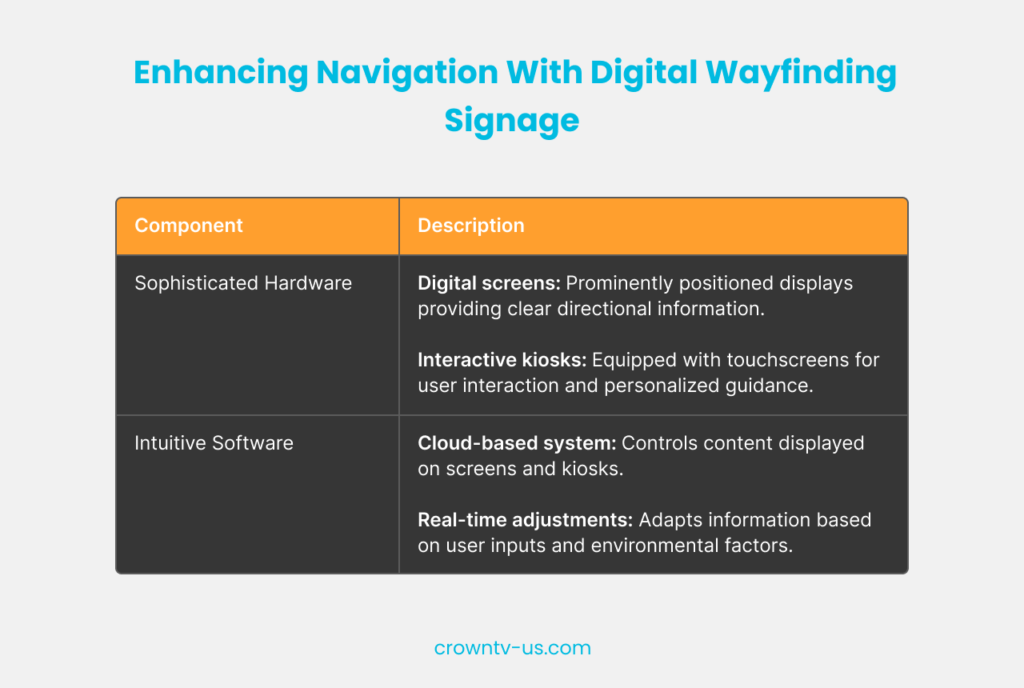
The goal is clear: to make the journey from point A to B not just straightforward but also engaging, ensuring a positive experience in navigating through any space.
What Are the Different Types of Digital Wayfinding Systems?
Digital wayfinding signage plays a crucial role in guiding visitors in various settings, and it comes in multiple forms to cater to different needs. Here are the common types of digital signage displays:
Interactive kiosks
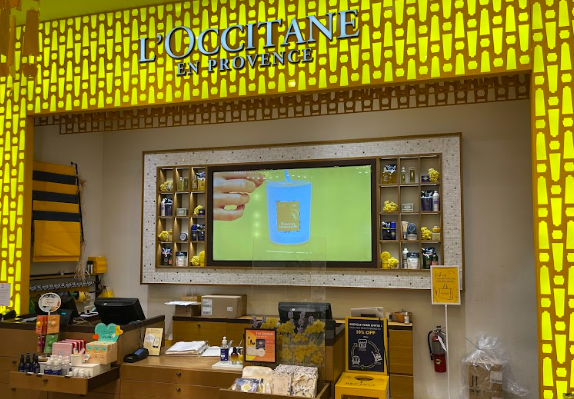
Interactive kiosks serve as user-focused stations, offering visitors the convenience of touchscreen maps to get customized directions.
These kiosks enhance the interactive wayfinding experience with features like event information and digital directories. They are a flexible and practical solution for indoor wayfinding, accommodating a variety of user needs.
Directional signage
Directional signage includes clear, often static displays that offer directional guidance. These essential wayfinding tools are frequently paired with more interactive systems like digital kiosks or touchscreen directories.
Their adaptability makes them suitable for both indoor and outdoor settings, guiding visitors efficiently to their desired locations.
Overhead digital displays
Overhead digital displays are particularly effective in high-traffic areas like transit centers and expansive retail spaces. Their elevated positioning ensures excellent visibility, ideal for relaying real-time information.
They can be used as indoor digital displays for the prompt and clear delivery of instructions, schedule updates, or important announcements.
Wall-mounted screens
Wall-mounted screens, positioned at crucial decision points, serve well in a variety of settings, including indoor navigational aids and outdoor & window-facing displays. They provide essential information like maps and directions to assist with navigation.

Moreover, these screens act as interactive points that elevate the visitor experience through features like interactive wayfinding.
Each digital wayfinding solution caters to specific user experiences and architectural layouts, ensuring information is accessible and navigable for everyone. They seamlessly integrate into the environment, enhancing the overall visitor journey with efficient, user-friendly guidance.
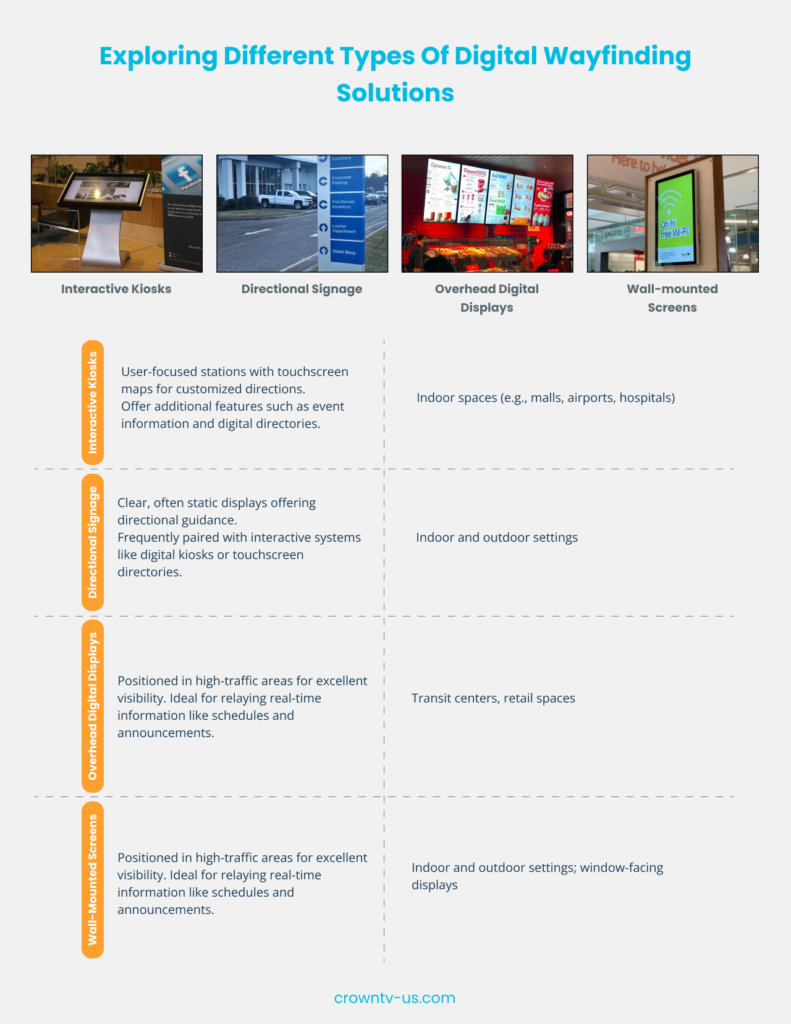
What Are the Benefits of Digital Wayfinding?
The adoption of digital wayfinding signage is making significant strides in enhancing navigation within spaces. This technology is rapidly growing, expected to reach a staggering US$ 664.95 million by 2028. With 60% of enterprises currently lacking digital signage planning to adopt it within two years, the impact and benefits are becoming increasingly clear.
- Improved Navigation: Serving as an effective wayfinding solution, digital screens come equipped with interactive features such as touchscreens and intuitive interfaces. These elements let visitors scan areas and find directions efficiently, significantly enhancing traffic flow and reducing confusion.
- Real-Time Updates: Unlike static signs, digital signage provides real-time updates, essential in environments such as hospitals or universities where changes are frequent. This ensures information remains accurate, reflecting modern technology’s capability to adapt dynamically.
- Increased Engagement and Branding Opportunities: Beyond navigation, digital signage offers versatile platforms for promotions, announcements, or social media integration. This multipurpose functionality not only improves the visitor experience but also opens new channels for customer engagement and branding, potentially helping to increase sales.
- Accessibility for All: Digital wayfinding prioritizes inclusivity, offering features such as multilingual support and assistance for individuals with visual impairments through audio descriptions and options for larger text. These functionalities make sure that navigation is universally accessible, catering to users with diverse requirements.
- Cost-Effectiveness Over Time: While initial setup costs exist, digital signage eliminates ongoing expenses related to traditional sign printing and replacement. This transition is not just financially savvy but also eco-friendlier, aligning with contemporary sustainable practices.
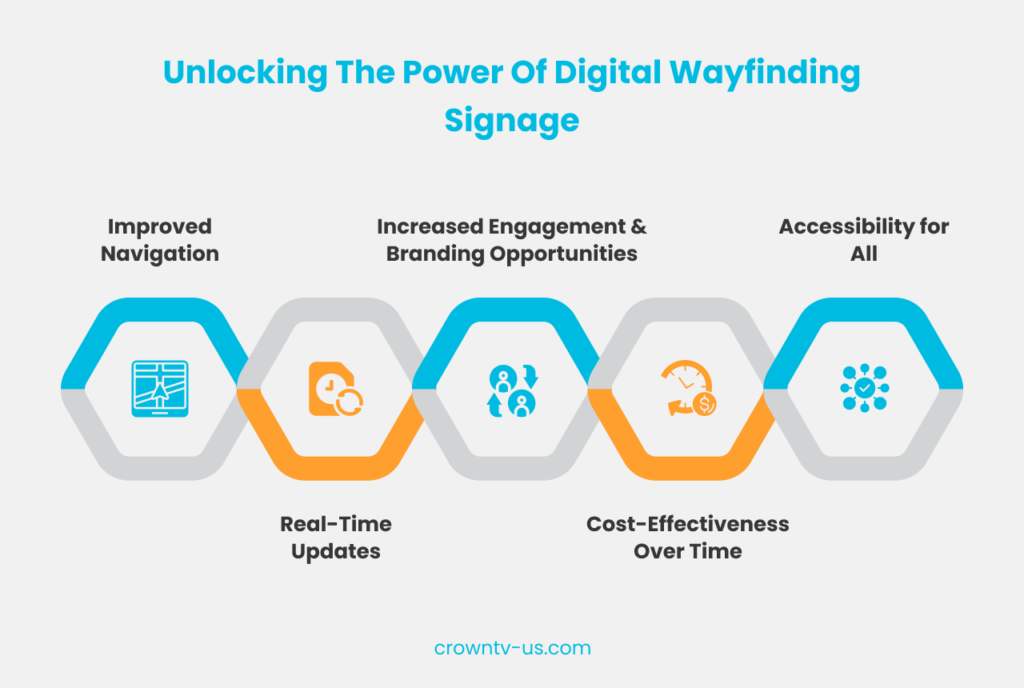
How Has Digital Wayfinding Signage Transformed Brands?
Digital wayfinding signage has emerged as a transformative force for brands, turning ordinary spaces into dynamic, interactive experiences. Here are a few brands that have improved their wayfinding through digital signage:
Redken: Simplifying product discovery
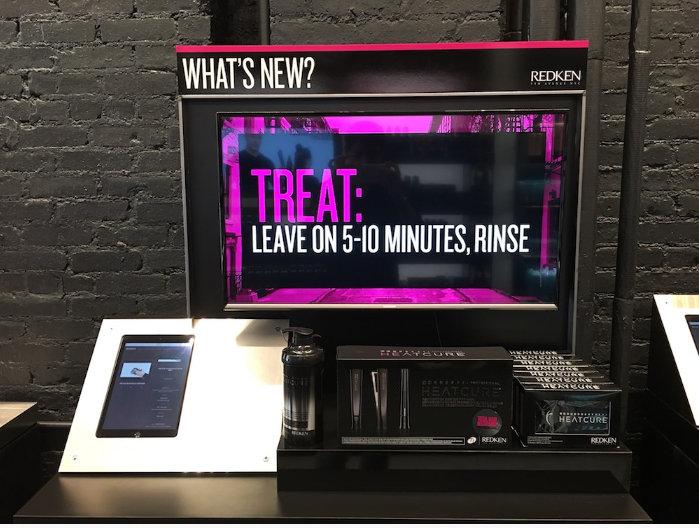
Challenge: In Redken’s bustling retail store, customers were overwhelmed by the extensive inventory. Navigating through hundreds of products to find the right one posed a significant challenge.
Solution: CrownTV revamped the use of digital signage in Redken’s store. By strategically placing displays and tailoring content, they transformed the space into a streamlined product marketing and browsing experience. Screens highlighting new products like the “Heatcure” line provided detailed information and demonstration videos, making product discovery engaging and effortless.
Johns Hopkins hospital: Streamlining hospital navigation
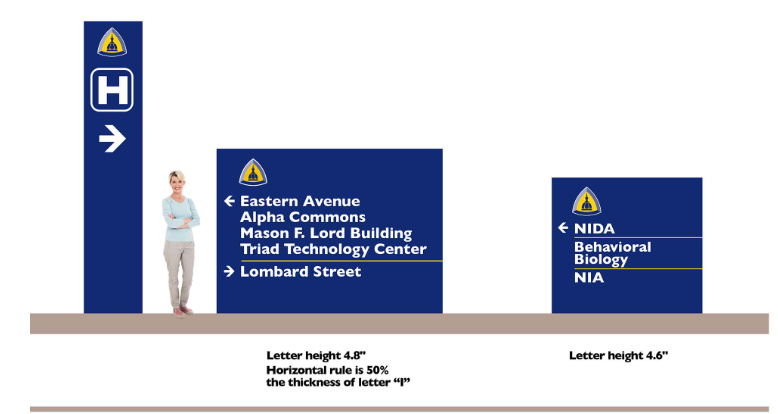
Challenge: At Johns Hopkins Hospital, patients and visitors found it difficult to navigate the vast hospital complex, leading to confusion and stress.
Solution: The hospital integrated digital signage and interactive kiosks into their wayfinding strategy. These tools provided real-time information, current locations, and directions, significantly easing the process of locating clinics, departments, and amenities. The touch-screen kiosks enabled users to input their destinations, guiding them through the most efficient routes within the hospital.
Gansevoort hotels: Enhancing guest experience
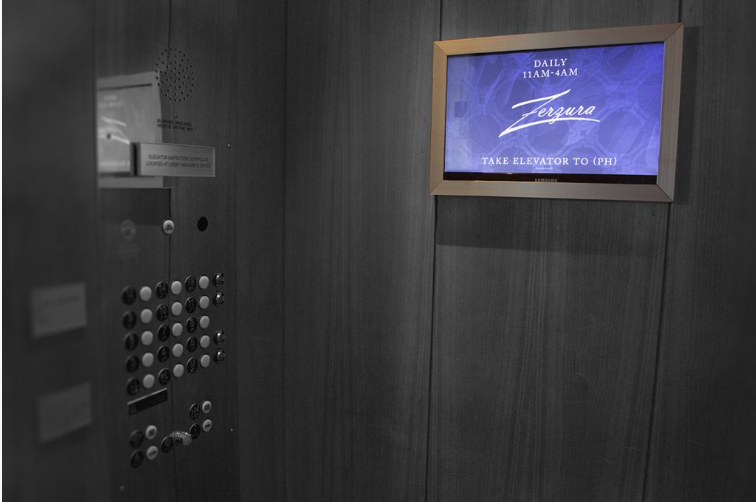
Challenge: Gansevoort Hotels needed an effective way to communicate with guests about the hotel’s offerings and promotions.
Solution: Employing digital signage in high-traffic areas like elevators, Gansevoort Hotels used CrownTV technology for showcasing features and promotions. This approach kept guests well-informed about the property’s current happenings, enriching their stay and boosting awareness of hotel amenities.
Digital Wayfinding: Opportunities in Various Environments
Digital wayfinding is changing the way we navigate through different environments, creating smoother and more engaging experiences. Whether it’s guiding through bustling airports or assisting in lively retail spaces, this technology offers valuable opportunities for easier and more interactive navigation.
Here’s a look at how digital signage is positively impacting various areas:
Retail spaces: Your interactive shopping ally

Digital signage in retail is actively engaging and influencing customers, turning every visit into an interactive journey.
- Promotional Display: Beyond simply advertising sales, digital signage leverages analytics to display targeted promotions based on time, weather, and shopper behavior. This allows retailers to customize content dynamically, directly influencing customer engagement and boosting sales.
- For example, a digital sign can highlight umbrellas and raincoats on a rainy day, tapping into immediate customer needs.
- Interactive Maps: These maps go beyond simply pointing directions. They’re smart, user-friendly guides equipped with search functions and suggested routes, making navigating stores easy and efficient.
- For example, Westfield malls have enhanced their customer experience by using interactive kiosks, leading to increased shopper satisfaction.
Healthcare facilities: easing the way

In healthcare settings, digital signage plays a critical role in providing clear guidance and useful information, making environments less intimidating.
- Directional Assistance: More than just offering directions, these multilingual displays accommodate the diverse backgrounds of patients and visitors, making everyone feel included and supported.
- For example, in multilingual regions, digital signs can automatically switch languages based on the predominant language spoken by patients in the clinic at that time, truly personalizing the navigation experience.
- Health Information: These displays integrate with hospital systems to offer personalized patient information, like schedules and appointment reminders. This ensures patients are well-informed but also aids in reducing missed appointments, a common challenge in healthcare management.
Corporate offices: enhancing communication and culture
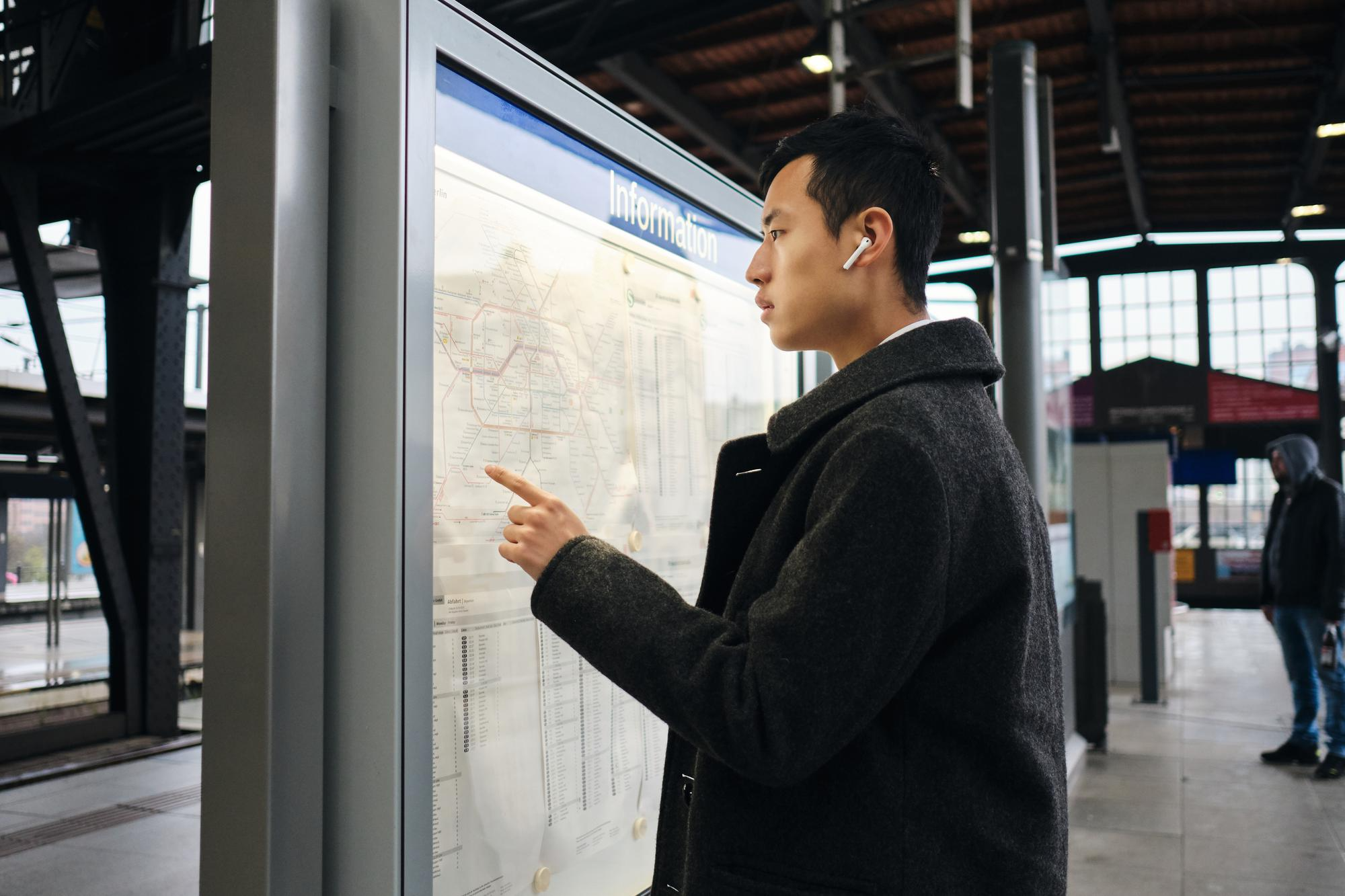
In the corporate environment, digital signage is essential for maintaining an informed and connected workforce.
- Internal Announcements: These systems are designed to seamlessly integrate with a company’s internal networks, updating in real-time to celebrate company achievements, milestones, or even personal employee announcements. This constant stream of information helps in building a transparent and inclusive culture where employees feel valued and recognized.
- Event Scheduling: By syncing with room booking systems, digital signage can effectively display room availability and upcoming events, vastly improving space management. These displays can also provide helpful reminders about meeting start times or changes in scheduling, thereby reducing delays and ensuring smoother day-to-day operations.
Educational institutions: The campus digital hub
Digital signage on educational campuses is an indispensable tool, enhancing both the learning experience and campus safety.
- Event and Schedule Updates: These interactive displays actively promote campus events, workshops, and club meetings, encouraging greater student involvement and campus community building.
- For instance, digital signs can highlight a guest lecture series, directing students not just to the event but also providing a QR code for quick registration.
- Emergency Alerts: In critical situations, these displays become a lifeline, offering instant, campus-wide alerts. They’re integrated with the campus emergency response systems, ensuring timely dissemination of safety instructions during emergencies, such as natural disasters or security threats. This rapid response capability can be crucial in mitigating risks and ensuring student and staff safety.
Transit hubs: streamlining passenger flow
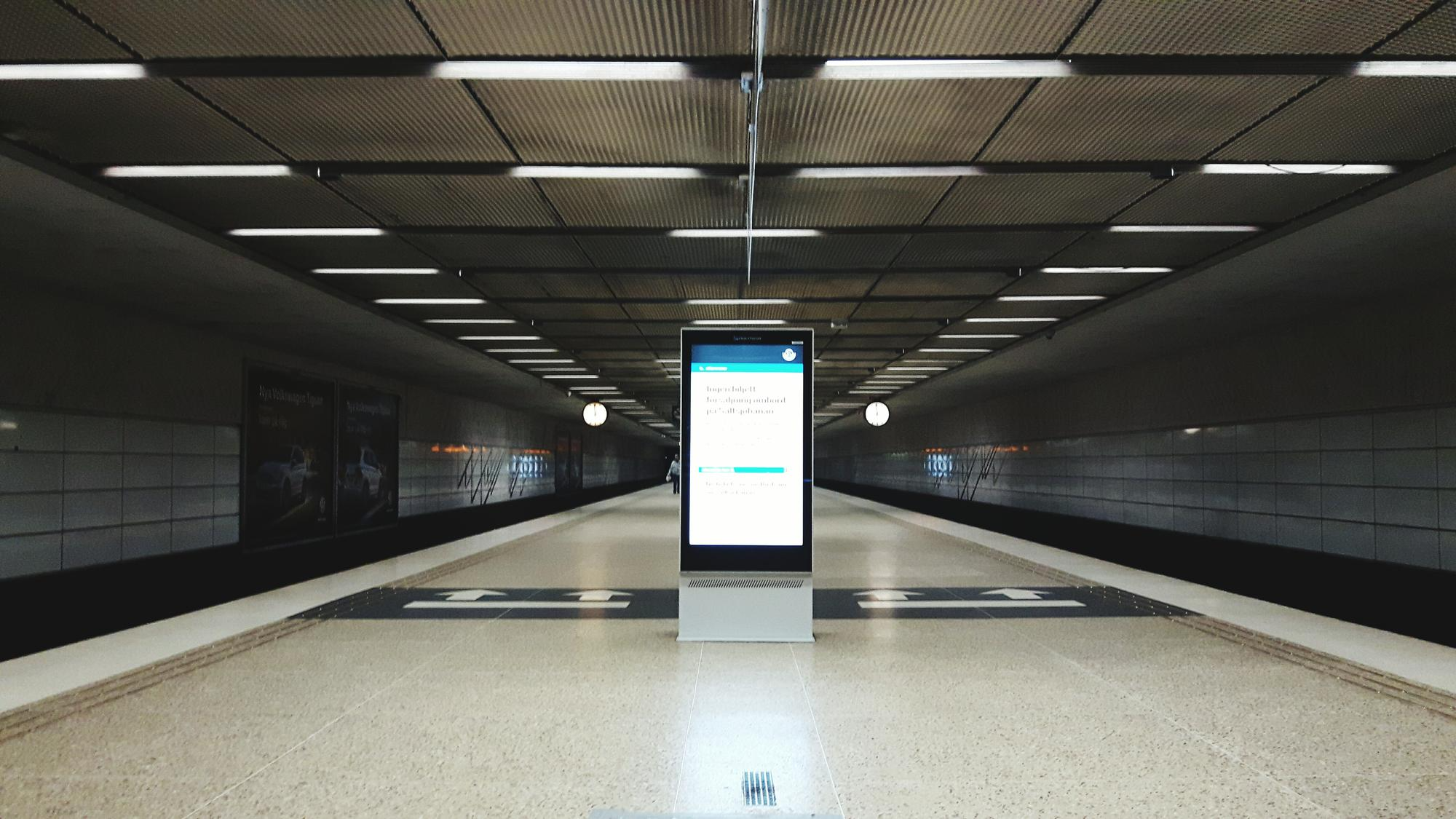
In the fast-paced environment of transit hubs, digital signage plays a vital role in keeping everything running smoothly and on time.
- Flight/Train Schedules: These displays are integrated with live transport databases, providing up-to-the-minute updates on delays, cancellations, and gate changes. At international hubs like JFK or Heathrow, this real-time information is key in managing the flow of thousands of passengers daily, reducing confusion and enhancing passenger experience.
- Wayfinding for Transfers: They offer personalized route planning, essential in sprawling transit centers. For travelers making tight connections, this can significantly reduce stress, guiding them efficiently to their next stop with estimated walking times and the quickest routes, ensuring a smoother travel experience.
Pro Tip: For effective wayfinding signage, look for a solution that offers seamless integration of hardware and software. This ensures smooth functionality and user experience.
CrownTV offers a White Glove Experience, which provides thorough support from installation to ongoing maintenance, ensuring that your wayfinding system operates flawlessly and meets all your specific needs.
Key Features to Look for in a Digital Wayfinding System
Implementing digital signage for wayfinding requires choosing a system with features that elevate its functionality and user experience. Here are five critical features to consider:
Global efficiency and robust security
For businesses operating on a global scale, efficiency in managing signage across different locations is key. Equally important is robust security to safeguard against cyber threats and unauthorized access. Opt for a system that delivers smooth, centralized control and state-of-the-art security features.
Such systems not only streamline operations but also provide peace of mind, knowing your network is secure from vulnerabilities.
Pro Tip: Implement regular security audits and updates to keep your system safe and operational.
Remote control and flexible user access
Remote management is a game-changer in digital signage, allowing updates and adjustments from any location. This feature is essential for timely content management and flexibility in response to changing needs.
Moreover, a system offering customizable user access ensures that each team member has appropriate control, based on their role and responsibilities, fostering a more organized and efficient operation.
Pro Tip: Train your staff on remote management tools to ensure smooth content updates and system control.
Local and corporate customization
In the age of personalized experiences, a one-size-fits-all approach doesn’t work. Digital signage should offer customization options that cater to both local nuances and broader corporate messaging.
This flexibility ensures that the content resonates with diverse audiences, whether it’s local customers or international employees while maintaining brand consistency.
Pro Tip: Conduct regular feedback sessions to understand the effectiveness of your customized content and make necessary adjustments.
Real-time content updates and interactivity
The ability to update content in real-time and include interactive elements is crucial for engaging and assisting users effectively.
This feature becomes especially valuable in dynamic environments like shopping centers or transportation hubs where information changes frequently. Interactive elements like touchscreens can enhance user experience by offering personalized wayfinding assistance.
Pro Tip: Leverage user interaction data from interactive features to continuously improve and personalize the wayfinding experience.
Analytics and reporting
Analytics and reporting capabilities allow you to understand user behaviors and preferences, making it easier to optimize content and wayfinding strategies.
With detailed insights, you can adjust signage for maximum impact, whether it’s tweaking the layout for better navigation or updating content for clearer communication.
Pro Tip: Regularly review analytics reports to identify trends and areas for improvement in your wayfinding system.
A comprehensive solution like CrownTV’s digital signage dashboard combines these essential features into a simple, powerful tool for businesses. It enables easy remote control, customizable content, real-time updates, and insightful analytics.
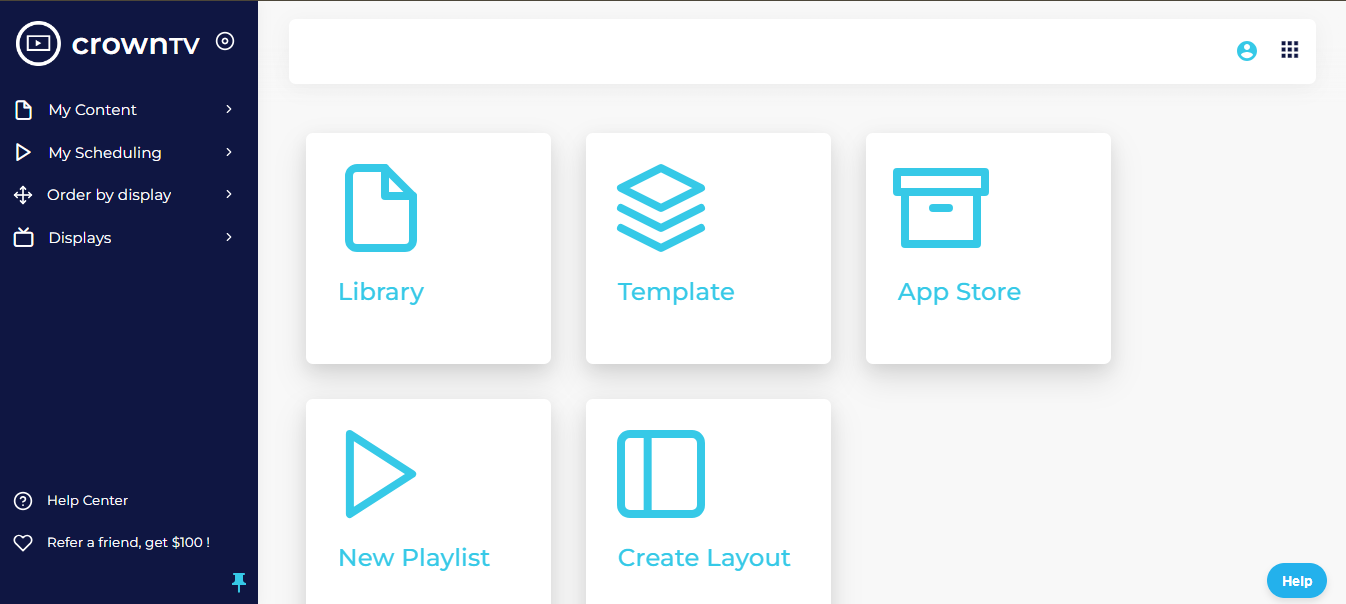
This means businesses can update signs effortlessly, tailor content to their audience, and see what’s working. It’s a straightforward way to make wayfinding systems more effective and user-friendly.
Ready to Upgrade Your Wayfinding Experience?
Navigating through the intricacies of digital wayfinding signage, you’ve explored how it significantly enhances user experience and interaction within any space. Let’s sum up the essentials:
- Digital wayfinding transforms visitor navigation by integrating real-time updates and interactive displays, making it easier to navigate complex environments.
- It has a broad spectrum of applications, enhancing experiences in retail, healthcare, corporate, and transit environments, showcasing its versatility.
- Beyond providing directions, digital signage engages users with promotions and branding opportunities, enhancing brand engagement and potentially driving sales.
- Economical over time, the shift to digital signage reduces ongoing maintenance and update costs, offering a sustainable solution.
- Digital signage software should facilitate easy management across multiple locations and include robust security protocols to protect against cyber threats and unauthorized access.
With a focus on seamless integration, CrownTV offers a comprehensive solution for digital wayfinding signage. From hardware displays to signage software, you can start your journey toward improved navigation and enhanced visitor interaction in any space. Discover the difference for yourself—book a demo today.
